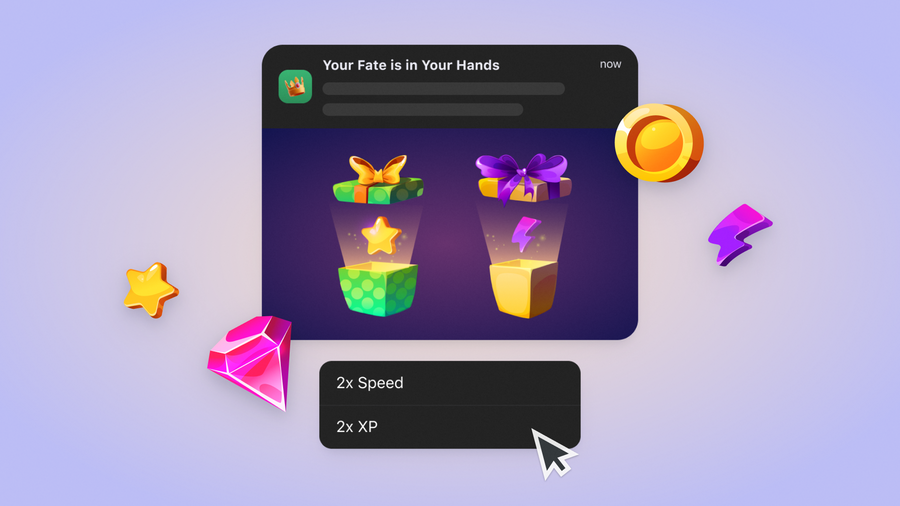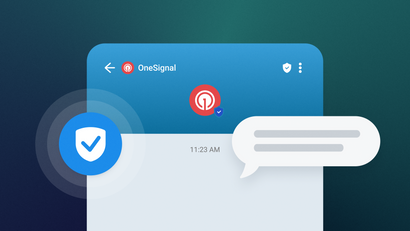The top 25% of mobile games have an average Day 28 retention of only 4%. When the industry’s best can’t keep more than 4% of players engaged after a month, we think there’s an opportunity here to stand out by doing what most aren’t.
While rewards, streaks, and surprise loot can boost early play, they’re just one part of the retention equation. These tactics are effective, but often only for short bursts, as they tend to over-rely on external incentive structures (think: freebies, prizes, or time-limited bonuses). Over time, they can dull the deeper sense of purpose that builds continued loyalty.
To nurture long-term retention, gaming apps must also focus on more sustainable motivators.
So what does drive retention over time?
Dust off those half-remembered notes from your psych elective all those years ago. According to Self-Determination Theory, we are most motivated when three core psychological needs are fulfilled:
- Autonomy – the need to make meaningful choices
- Competence – the need to feel skilled and effective
- Relatedness – the need to feel connected to others
When your messaging and mobile marketing strategy reflect these needs, you move beyond merely notifying your player base—you inspire them to keep coming back to see how their choices unfold.
Put yourself in your players’ shoes: would you rather choose your own adventure or play someone else’s?
Here are six powerful ways to align your mobile gaming engagement strategy with how players actually think, feel, and stay invested.
1. Let players choose their own rewards (Autonomy!)
In mobile gaming, even small decisions can have an outsized impact on retention—like letting players skip or watch an intro cutscene to improve first-session satisfaction.
When players get to choose their rewards, they’re actively shaping their own experience, rather than just collecting what’s thrown at them. This sense of ownership increases emotional investment, making players more likely to return, progress further, and spend more over time.
Tactic: Use push notifications or in-app messages that present a choice instead of dictating the outcome.
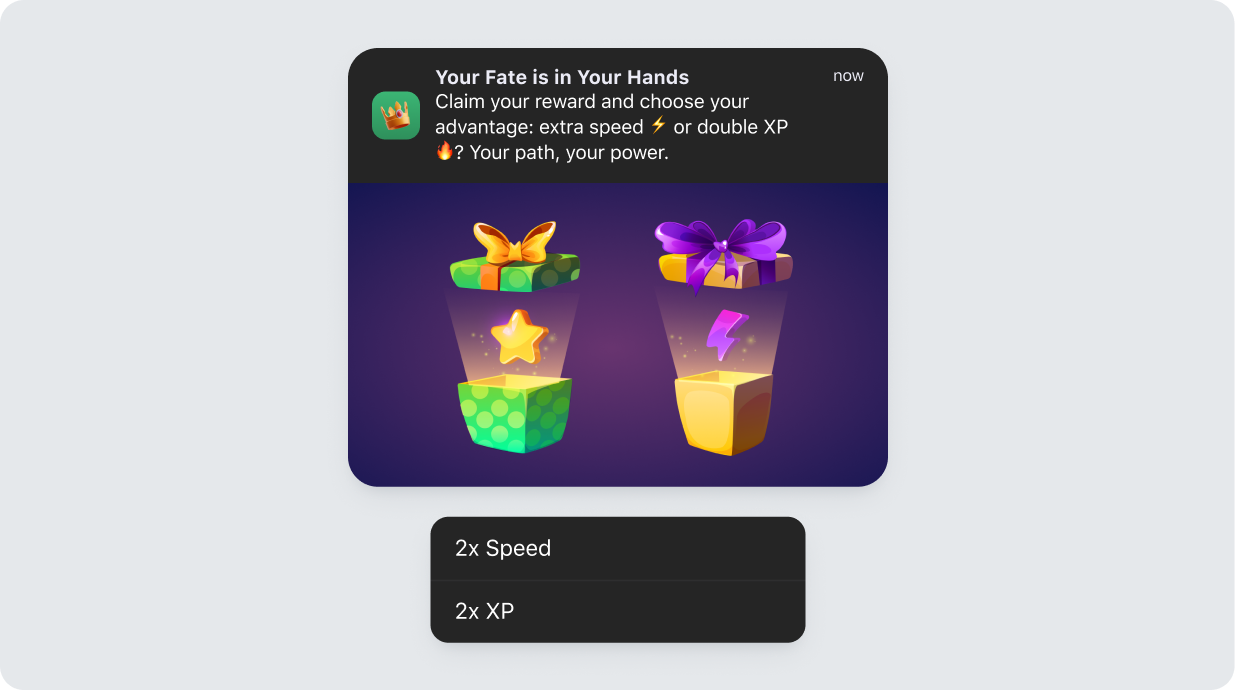
✅ Why it works: This small moment of agency makes the player feel like an active participant, not just a recipient.
OneSignal tip: Use Journeys to assign tags based on selected options, and build branching follow-up messages to reflect the player’s choice.
Best channels: Push, IAM, mobile inbox, and personalized follow-up emails.
Looking to leverage more psychological principles in your mobile engagement strategy? We created an entire guide dedicated to truly getting in the heads of your users.
2. Personalize Journeys based on player behavior (Competence!)
Players want to see their skill and progress recognized. Messages that reflect performance boost motivation and reinforce a sense of mastery. And it goes beyond making players feel good; it’s a way to reinforce the exact behavior you want them to repeat.
That means you can use real-time feedback to nudge players toward deeper session loops, higher progression rates, and ultimately more monetization opportunities. When a message reflects a recent achievement, the player’s sense of mastery is heightened—and the next logical step is to keep playing to reach the next milestone.
Tactic: Trigger messages based on in-game achievements or behavioral milestones.
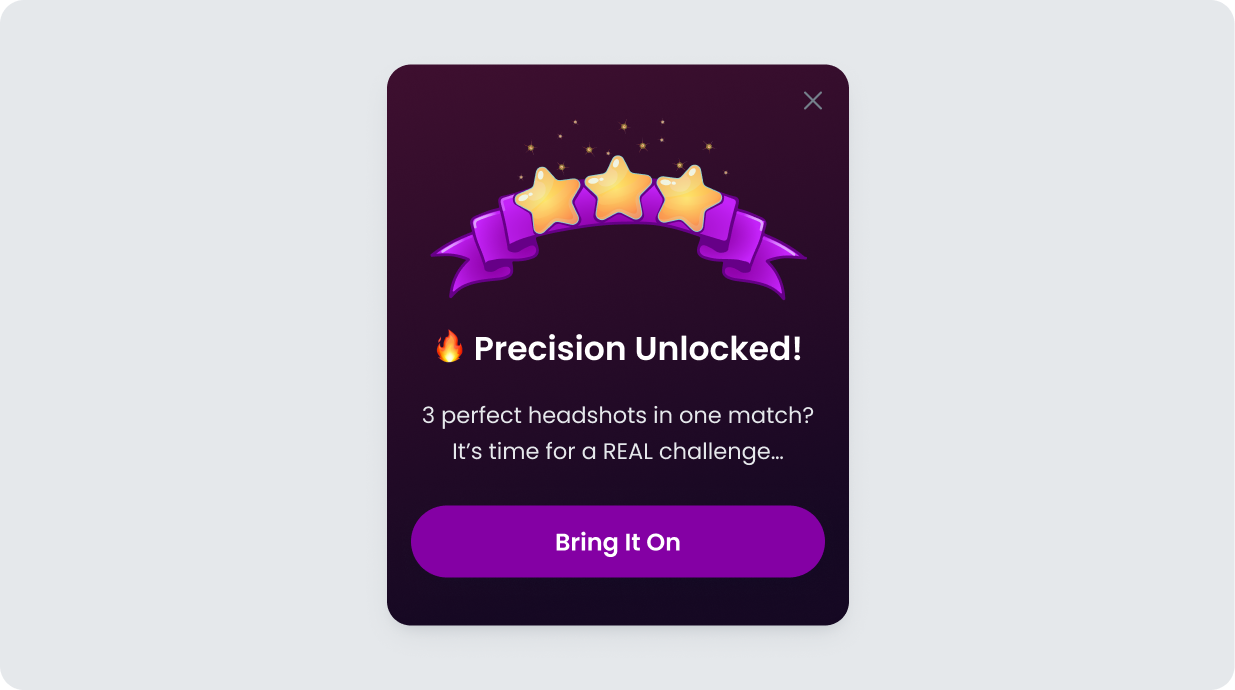
✅ Why it works: This type of message speaks directly to competence—celebrating a skill moment and using it as a springboard to keep the player in flow. It leverages the dopamine hit of recognition and provides a clear call to action that leads back into core gameplay. Done consistently, these micro-celebrations can increase level completion rates, session frequency, and event participation.
Omnichannel playbook:
- Push or IAM for real-time reinforcement
- Email or inbox to reflect cumulative growth (“You’ve completed 80% of the story arc!”)
- Dynamic segmentation via OneSignal to tailor Journeys by player type or difficulty level
3. Build social loops into messaging (Relatedness!)
Players are far more likely to return when they feel like they’re part of an active, evolving community, not just playing in isolation. Social features tap into a powerful motivator: no one wants to let their team down or miss a moment their friends are part of.
Tactic: Highlight team dynamics, social achievements, and peer activity.
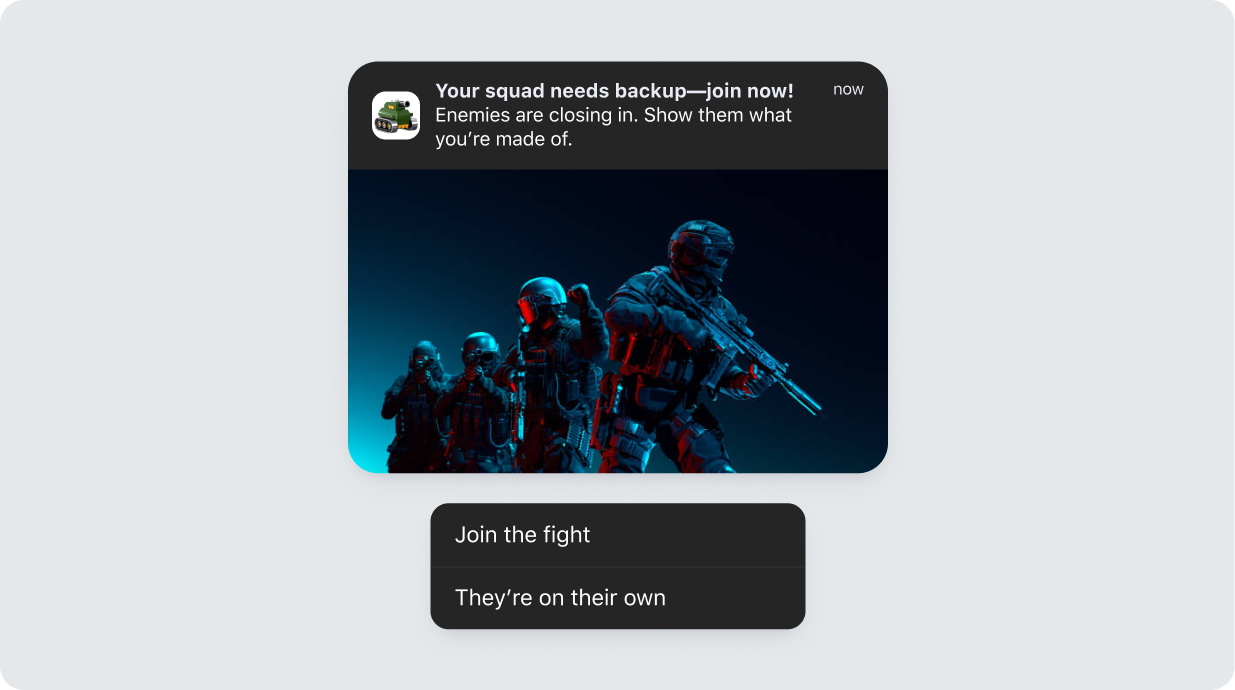
✅ Why it works: For mobile game marketers, social-driven messaging fosters interdependence between players, which is one of the strongest predictors of long-term retention.
Best use cases by channel:
- Push: Real-time invites and action
- IAM: Leaderboard rewards, co-op status
- Inbox: “Alex just gifted you 50 coins”
- Email/SMS: Dormant users pulled back in via peer comparisons (“Your friend just surpassed your score!”)
4. Offer time-based, but flexible experiences (Autonomy!)
While time-limited events create urgency, rigidity creates stress. Giving players flexibility within constraints supports a healthier engagement loop.
Tactic: Offer wide event windows or multiple ways to win.
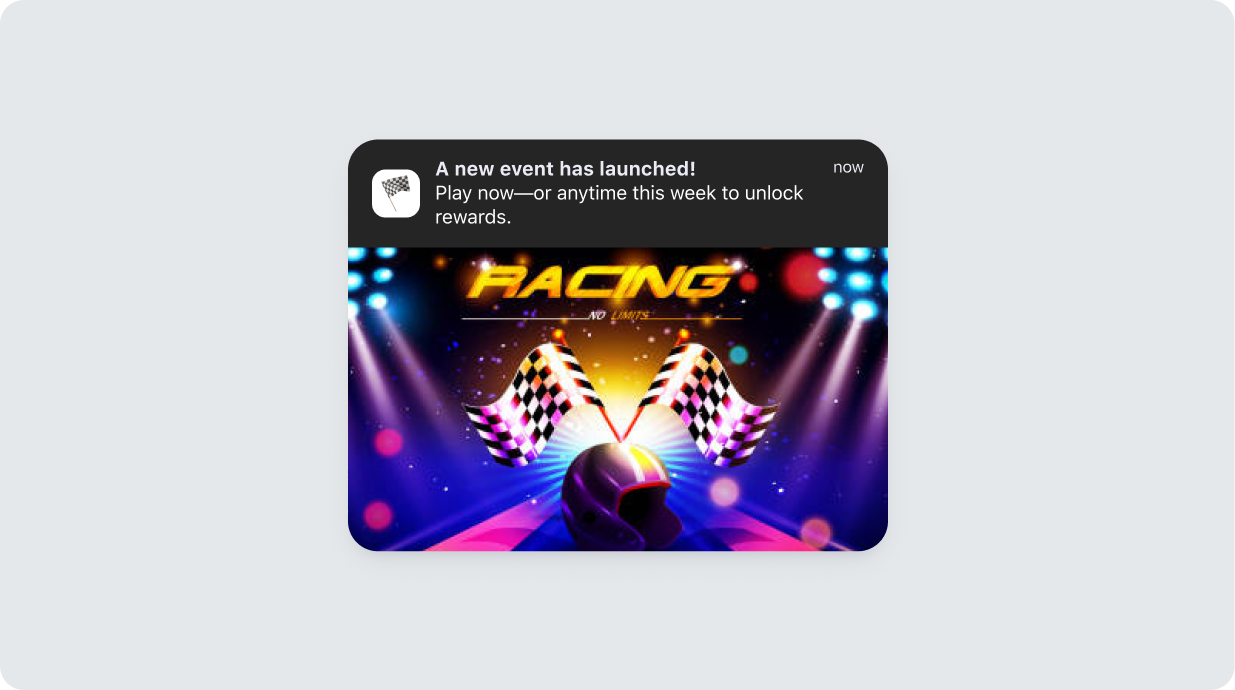
✅ Why it works: This prevents fear of missing out from becoming frustration and shows respect for players' time.
Channel strategy:
- Push: Event launch and reminders
- IAM: Event tutorial or branching entry points
- Inbox: Follow-ups, second chances, or makeup missions
5. Reinforce identity and role (Competence + Autonomy!)
Players develop emotional attachment to their chosen class, strategy, or play style. Messaging that reflects and honors that identity deepens engagement.
Tactic: Segment messages by behavior or playstyle—tactical vs. aggressive, PvE vs. PvP, story-focused vs. achievement-driven.
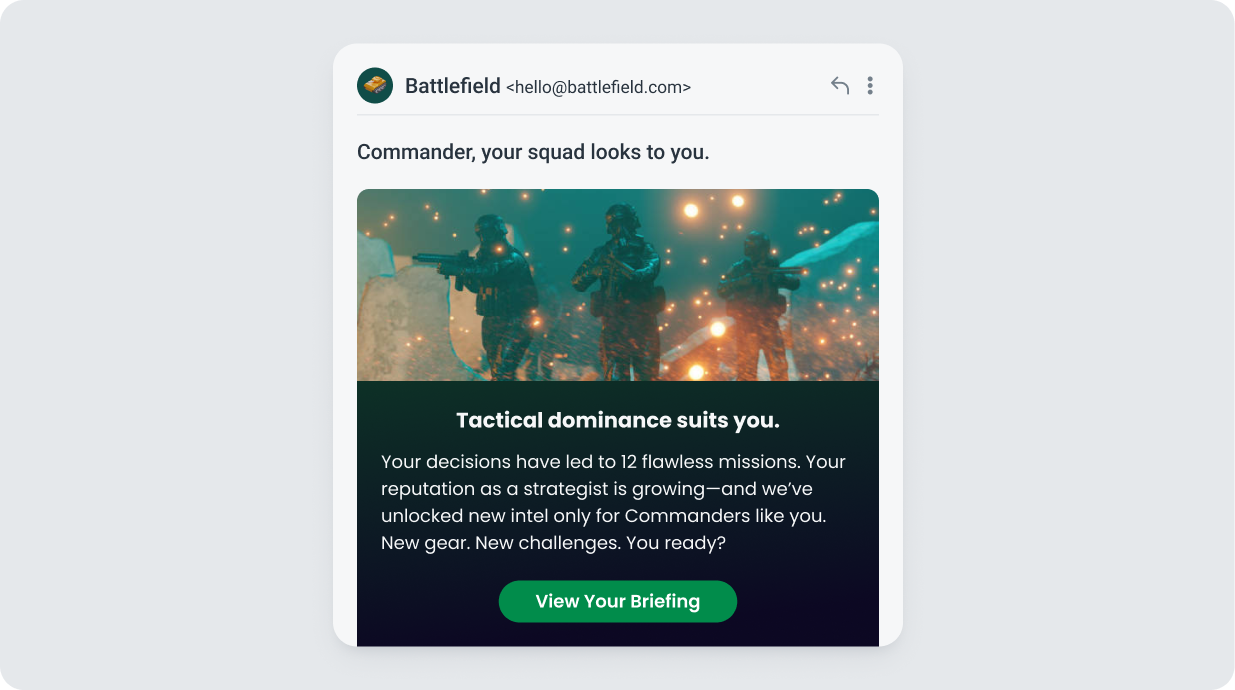
✅ Why it works: This moves beyond a generic “congrats” message, recognizing of the player’s unique role and play style, paired with content that feels exclusive to that identity.
The takeaway for marketers: role-based messaging lets you create parallel experiences within the same game, so each archetype receives communications that feel tailor-made.
For a strategist, it’s new intel and tactical missions; for a brawler, it could be new weapons and combat challenges. This deepens role immersion, increases the perceived value of content, and nudges players toward progression paths they already care about.
Execution: Use tags or behavioral tracking to reflect role archetypes. Design unique Journeys for each.
6. Use opt-in micro-journeys to offer control (Autonomy + Engagement!)
Opt-in campaigns give players a sense of control and build narrative anticipation. They're more likely to stay invested in what they choose to experience.
Tactic: Use IAMs to invite players into optional challenges, onboarding experiences, or narrative arcs.
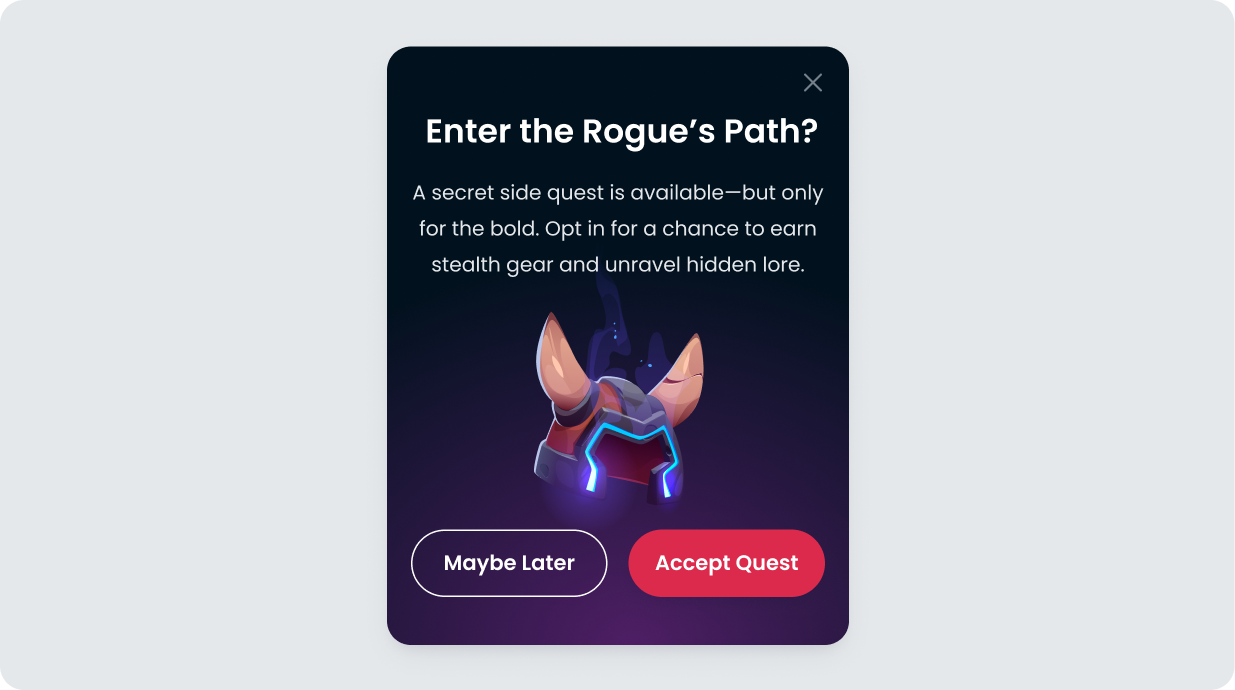
✅ Why it works: By letting them say “yes” on their terms, you reduce notification fatigue and ensure that every follow-up feels relevant—because it’s connected to a decision they made themselves.
Bonus Tip: Once opted in, follow up via push, email, or inbox with personalized messages tied to the micro-journey’s theme.
Check out this OneSignal Journey built on player choice
Here’s how a mobile game could use OneSignal Journeys to deliver autonomy and competence at scale:
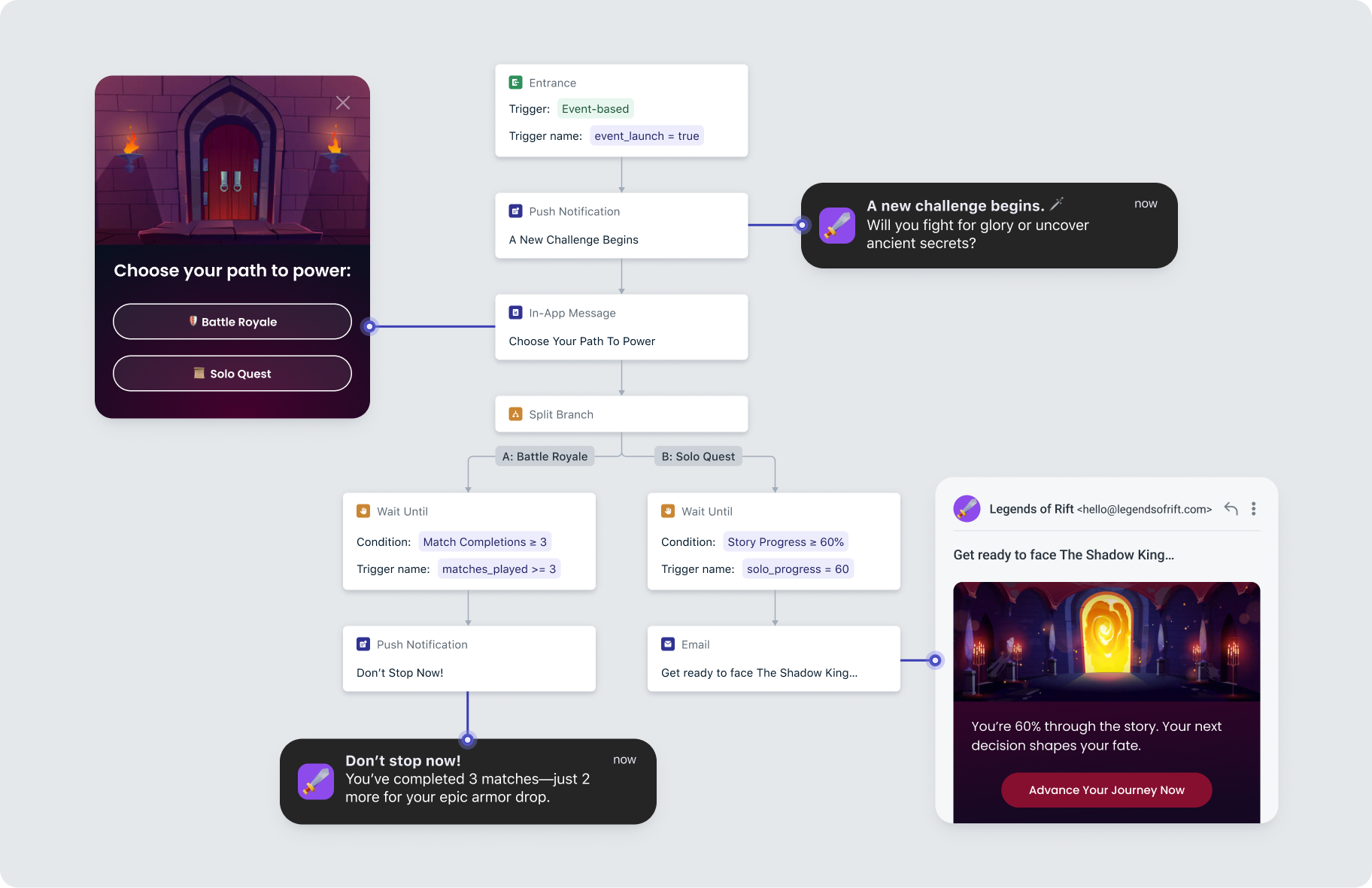
✅ This Journey respects player choice, adapts based on performance, and supports both casual and competitive play styles—all with a single, flexible omnichannel marketing strategy.
OneSignal: Designed for loyalty, not just logins
Before we were OneSignal, we were a mobile game studio ourselves, so we know firsthand just how important it is to create moments that keep players invested beyond the first session.
Retention isn’t just about throwing bigger rewards at your players. It hinges on understanding what drives them. When your mobile marketing strategy honors autonomy, competence, and connection, you create engagement that lasts.
So take a moment to audit your messaging:
Are you offering prizes or purpose?
Ready to level up your game messaging?
Get started for free